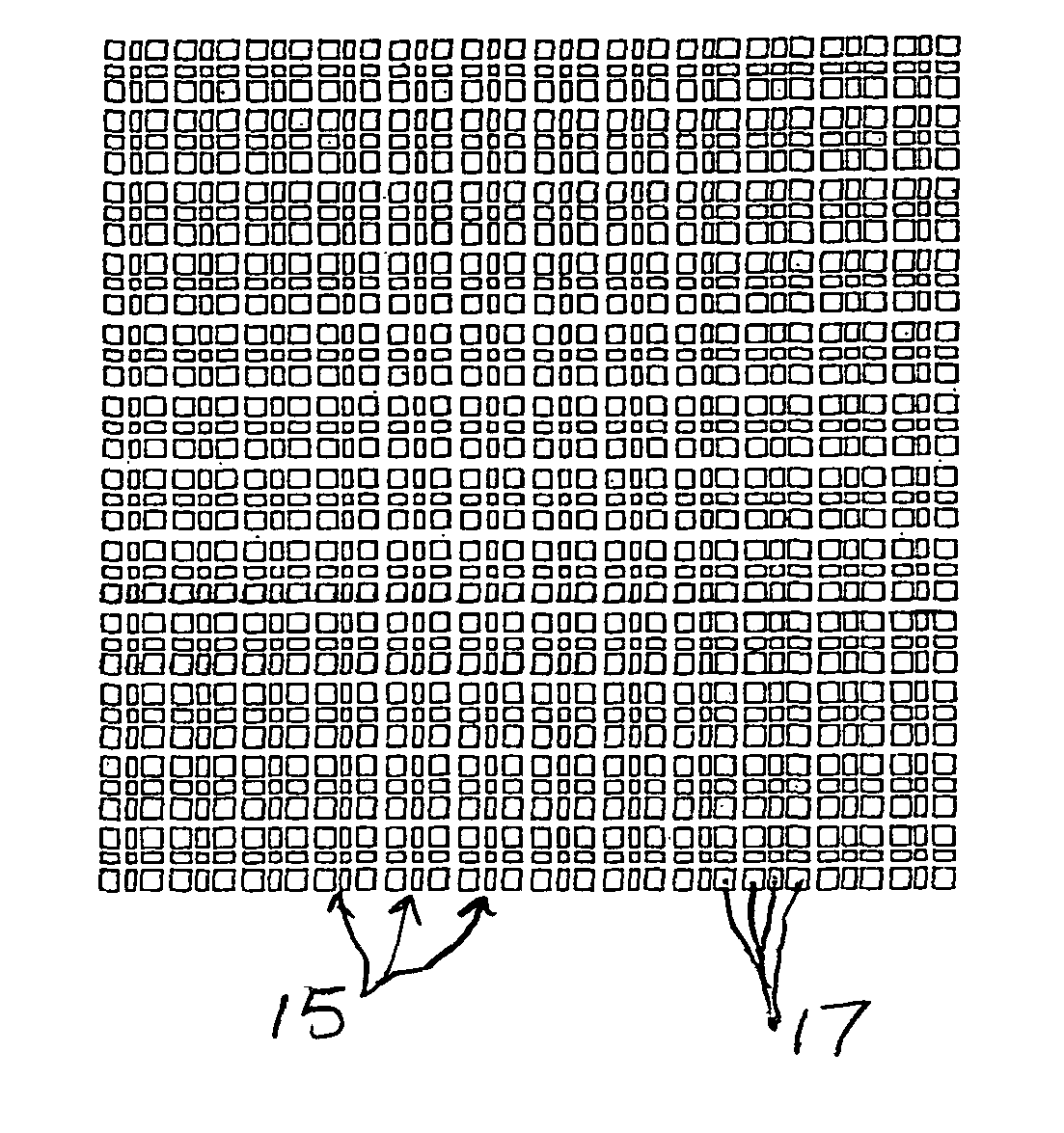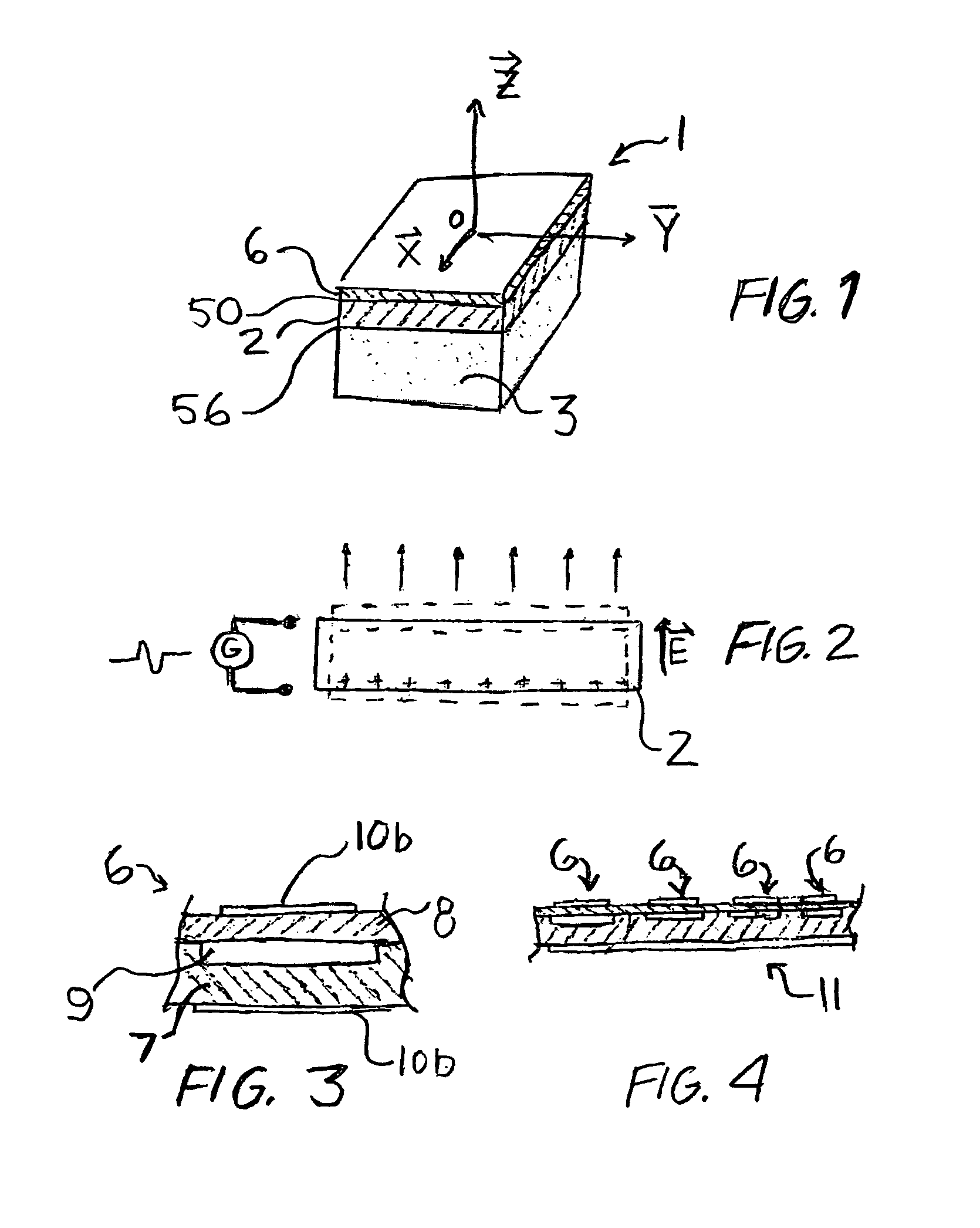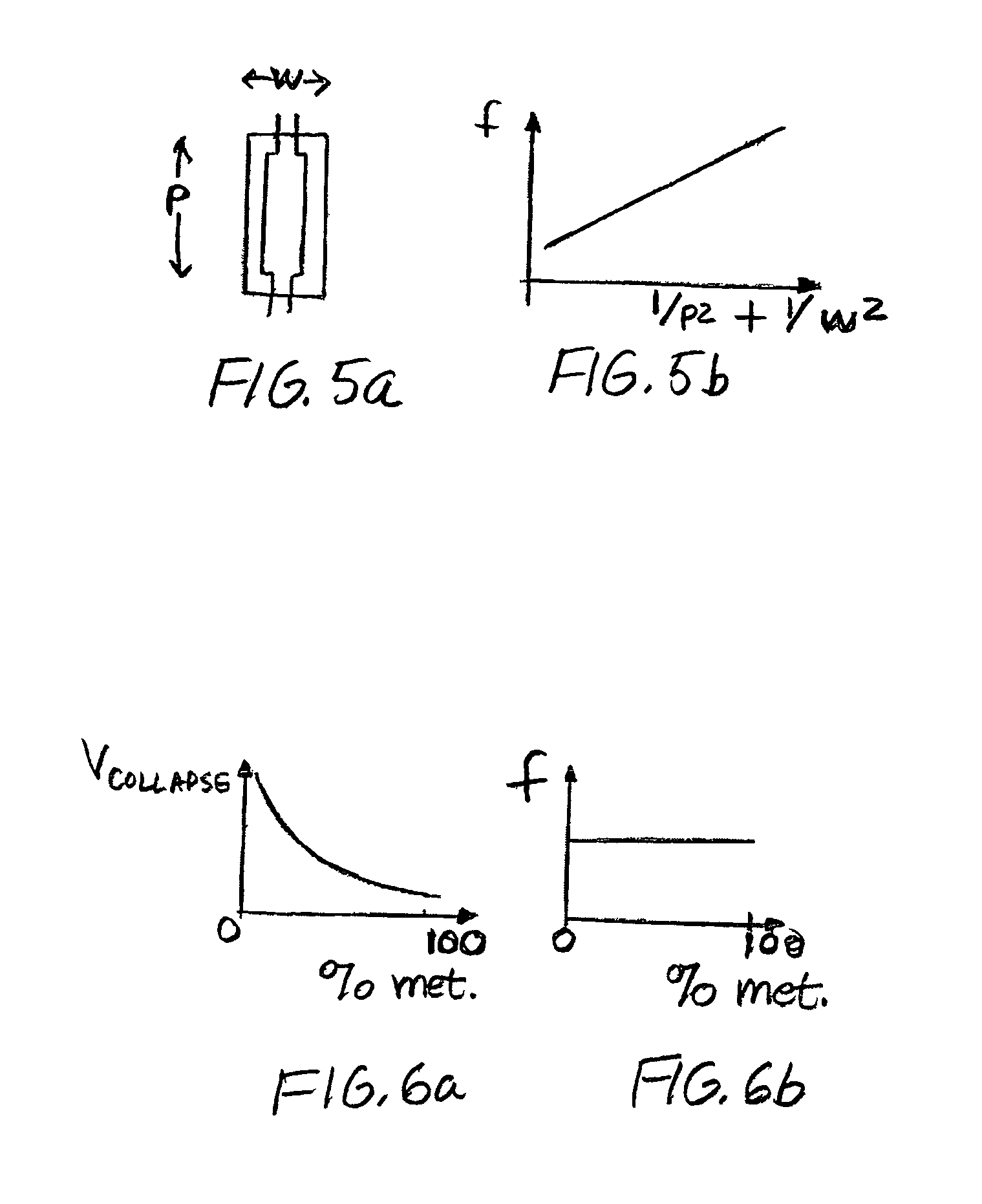Capacitive micro-machined ultrasonic transducer for element transducer apertures
a micro-machined ultrasonic transducer and element technology, applied in the field of ultrasonic transducers, can solve the problems of compromising performance and/or cost, affecting the intrinsic acoustic behavior of the transducer device, and difficult effect of geometric parameters set at this initial stage, so as to enhance the electrical impedance characteristics of the transducer
- Summary
- Abstract
- Description
- Claims
- Application Information
AI Technical Summary
Benefits of technology
Problems solved by technology
Method used
Image
Examples
Embodiment Construction
[0047]Before describing the preferred embodiments of the invention, it is noted that in the discussion below, the term “element transducer” (or “element transducers”) refers to a sub-element aperture of an array transducer and usually comprises a plurality of transducer elements arranged on the full aperture. The term is only applicable to array type transducer apparatus and is not used in connection with single surface transducers. The term “CMM” (or “CMMs”) designates capacitive cells that are machined on or etched into the surface of a silicon substrate in such a manner as to form a transducer surface when a sufficient number of cells are provided. The term “CMUT” (or “CMUTs”) designates an ultrasonic transducer comprising a plurality of CMMs or a plurality of CMM groups.
[0048]As indicated above in the description of the prior art, CMUT devices can be shaped in various ultrasonic transducer configurations whatever the application or modality. In the following detailed description...
PUM
| Property | Measurement | Unit |
|---|---|---|
| thickness | aaaaa | aaaaa |
| electrical impedance | aaaaa | aaaaa |
| dimensions | aaaaa | aaaaa |
Abstract
Description
Claims
Application Information
 Login to View More
Login to View More - R&D
- Intellectual Property
- Life Sciences
- Materials
- Tech Scout
- Unparalleled Data Quality
- Higher Quality Content
- 60% Fewer Hallucinations
Browse by: Latest US Patents, China's latest patents, Technical Efficacy Thesaurus, Application Domain, Technology Topic, Popular Technical Reports.
© 2025 PatSnap. All rights reserved.Legal|Privacy policy|Modern Slavery Act Transparency Statement|Sitemap|About US| Contact US: help@patsnap.com



